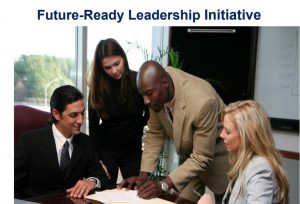
Do Leaders Have To Be Dominant To Succeed?
A question that arises consistently in leadership and team development discussions is whether some behavioral styles are condemned to be followers while other styles fall naturally into leadership roles.
The S-Style (Steadiness – Reserved/People-Oriented) is the target of most of the questions and doubts about the capacity to lead effectively. I will use Jim Collins 8 traits of greatness shared in Good To Great to discuss the S Style and leadership. Collins studied 1435 companies and classified 11 as truly great. His pillars of greatness run counter to traditional thinking about successful leadership.
Making the transition from good to great doesn’t require a high-profile CEO, the latest technology, innovative change management, or even a fine-tuned business strategy. Amazon.com Review
The 8 Keys To Greatness
1 Level 5 Leadership: A Level 5 leader displays a paradoxical blend of personal humility and professional will. There is a downplaying of self, combined with a strong commitment to being professional and to achieve shared objectives.
This is typical of S-Style behaviour. At times it is difficult to distinguish who is the leader when observing the team in action. The S-Style also strives to master whatever they do and is one of the reasons for their desire to get into routines versus chopping and changing.
2First Who Then What: There is a focus on having the right people in place and moving out people who are not a good fit.
Teamwork is at the heart of S-Style philosophy. Since trust is also central to S Style outlook, the composition of the team is very important.
3Confront the Brutal Factsthe Stockdale Paradox: Retain unwavering faith that you can and will prevail in the end, regardless of the difficulties, AND AT THE SAME TIME have the discipline to confront the most brutal facts of your current reality, whatever they might be.
Patience, persistence and healthy paranoia are features of S Style behaviour.
4The Hedgehog Concept: Keep it simple. Focus on 3 intersecting circles: What you can be the best in the world at; What you are deeply passionate about; and What best drives your economic or resource engine.
While thinking about being a world-beater is not a natural feature of the S Style make-up, passion and clarity about what works and does not work are central characteristics.
5Culture of Discipline: In a culture of discipline, people do not have jobs; they have responsibilities.
The S Style is firm on keeping ones word and honoring commitments.
6The Flywheel: The path to greatness is similar to relentlessly pushing a heavy flywheel in one direction, turn upon turn, building momentum until you achieve breakthrough, and go beyond.
This is classic S Style thinking. Steady, persistent progress as against gambling on dramatic wins.
7Clock Building, Not Time Telling: Build an organization that can adapt through multiple generations of leaders; the exact opposite of being built around a single great leader, great idea or specific program. Identify the key ingredients to drive sustainable progress, rather than relying on a personality-driven culture.
The S Style focus on sustainability helps them avoid being attracted to traditional short-term gains. The downplaying of self runs counter to a reliance of personalities.
8Preserve the Core and Stimulate Progress: A values-driven existence. Keeping clear the distinction between what we stand for (which should never change) and how we do things (which should never stop changing). Great companies have a purposea reason for beingthat goes far beyond just making money, and they translate this purpose into BHAGs (Big Hairy Audacious Goals) to stimulate progress.
The S Style values community and embraces the greater good even at the expense of personal sacrifice.
Bottom line: People can craft an effective leadership strategy that embraces any behavioral style. Be yourself!
Access our Special Report on Future-Ready Leadership here

Trevor E S Smith is a Director of the Success with People Academy home the SHRM-accredited Certified Behavioral Coach award (now enrolling) and 3-D Team Leader Certification: Leading Difficult, Dominant and Diverse Personalities.
The Success with People Academy applies DISCerning Communication while improving Recruitment & Team Performance. It prepares Personal &Team Behavioral DNA Analyses and 360 surveys on the revolutionary FinxS Platform from Extended DISC.